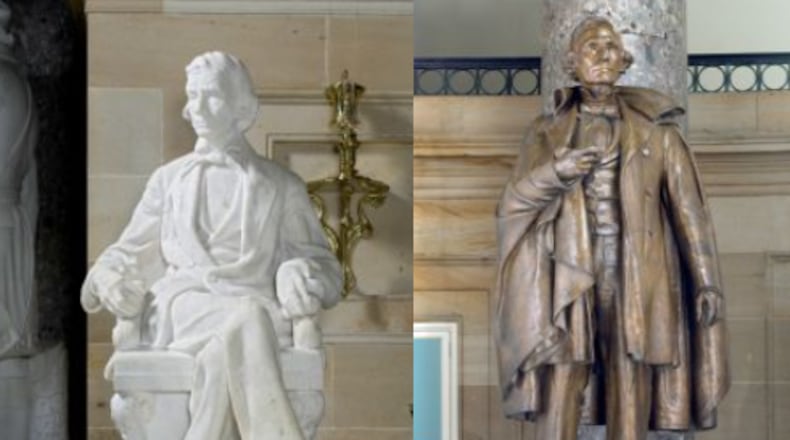Hours after President Donald Trump declared that he would not let the Pentagon change the names of military bases that honor Confederate soldiers, House Speaker Nancy Pelosi asked a special House-Senate board to remove eleven statues of Confederate leaders which are on display in the U.S. Capitol.
"While I believe it is imperative that we never forget our history lest we repeat it, I also believe that there is no room for celebrating the violent bigotry of the men of the Confederacy in the hallowed halls of the United States Capitol or in places of honor across the country," Pelosi wrote.
The statues are part of the collection sent by the states to the Capitol - with each state choosing two people to honor.
In her request, the Speaker specifically named two statues honoring the leaders of the Confederacy:
Jefferson Davis - the President of the Confederacy - whose statue was sent to the Capitol in 1931 by the state of Mississippi, and Confederate Vice President Alexander Stephens, whose statue was sent by Georgia in 1927.
Pelosi's request of a special House-Senate board came on a day of fast moving events related to the Civil War, as President Donald Trump declared that he would ignore any Pentagon move to rename military bases named after Confederate soldiers, going against the wishes of the Army, and some in his own party in Congress.
The move from the House Speaker also came as NASCAR announced it would no longer allow Confederate flags to be displayed at racing events.
The call to remove Confederate statues from the Capitol is not new - black lawmakers asked for that in 2017 after violence in Charlottesville, Virginia, and other calls have come through the years as well.
Asked about the statue of Stephens in 2015, Rep. John Lewis (D-GA) turned cold.
"I want to see it go," Lewis told me off the House floor. "I don't like taking young people on a tour and telling them that this was the Vice President of the Confederacy."
"We have to get our own house in order," Lewis added. "We have to have a cleansing in this place."
Each state sends two statues to the Capitol, and the choices are certainly a window into the wishes of that state.
They include Robert E. Lee from Virginia, which was sent to the Capitol in 1909. Alabama has Confederate officer Joseph Wheeler, sent in 1925. North Carolina has a Confederate soldier sent in 1916.
About the Author
The Latest
Featured



